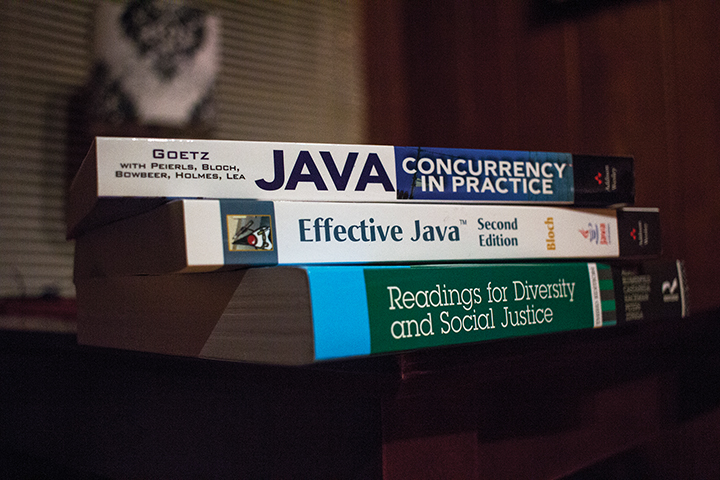Views expressed in opinion columns are the authors’ own.
Traditional textbooks — the ones we are assigned in most of our classes — are unnecessarily expensive. The high cost of textbooks can be attributed to the textbook market, which is structured to victimize students.
AEI.org reports that textbook prices have increased 812 percent since 1978, which is a greater increase than both medical and home prices. This astronomical increase has led to students spending an average of $1,250 a year on books and supplies, according to the College Board. That $1,250 is on top of the cost of tuition, mandatory fees and housing associated with going to college. It’s the textbook market and the publishers profiting off students that are to blame.
In a free market, the laws of supply and demand determine the prices of a product. As the demand for something increases, or the amount of product decreases, the price of that product goes up. However, the textbook market has been experiencing a market failure, and the price of books are being artificially increased. The primary consumers of textbooks — students — have absolutely no say in the products they are buying.
Students are required to buy textbooks for a class and have no choice in what textbook to buy because the choice is imposed by professors and department heads. The unfortunate consequence of this is the price for textbooks is determined by professors and departments deciding what we buy. A publisher can jack up the prices as much as they like without the fear of losing customers because students can’t reject the purchase at any price point.
An article from Priceonomics, a data-focused content marketing organization, breaks down the cost of a textbook for an entry level math course. There are several important facts to note in the article. The most shocking is that a publisher received 22 percent in profits from the textbook. Millions of students take out loans and rely on financial aid just to fund college, and the publishing companies use these students’ money to profit. In any other market, profiting would be justifiable, but profiting that much from a demographic that tends to be financially vulnerable is abhorrent.
A logical option to make higher education affordable and accessible is to transition to Open Educational Resources. OERs are free, peer-reviewed and available for any professor to adopt. They have an open copyright, meaning any professor can use them for free and personalize the textbook to best fit their needs, which is a luxury traditional textbooks do not offer due to copyright.
Many people are wary of open source textbooks because they are free, but textbooks found on popular open libraries like Openstax, a non-profit based out of Rice University, and Open Textbooks Network, a network that University of Maryland Libraries recently joined, are all peer reviewed and offer exceptional pedagogical value. Many professors and courses, such as an introductory Human Anatomy course at this university, currently use open source materials. Yet not enough professors have adopted this technology to help all of us save money and ensure an affordable education.
We need to combat this exploitative market to ensure that every one of us receives a quality, affordable higher education. As the Affordable Textbooks Campaign Coordinator for MaryPIRG, a student advocacy group on campus, I want to invite you to the Affordable Textbooks March on April 6th from 1-2 p.m. The march will take a designated path from Hornbake Library to McKeldin Library, where it will end with a few words from some of our legislative champions of Open Educational Resources. Join us to share your voice. We will be asking this university to create a grant program that offers funding to professors that adopt their own Open Educational Resources to save students money.
Gaurav Dahal is a sophomore biology and chemistry major. He can be reached at gauravdahal98@gmail.com.



